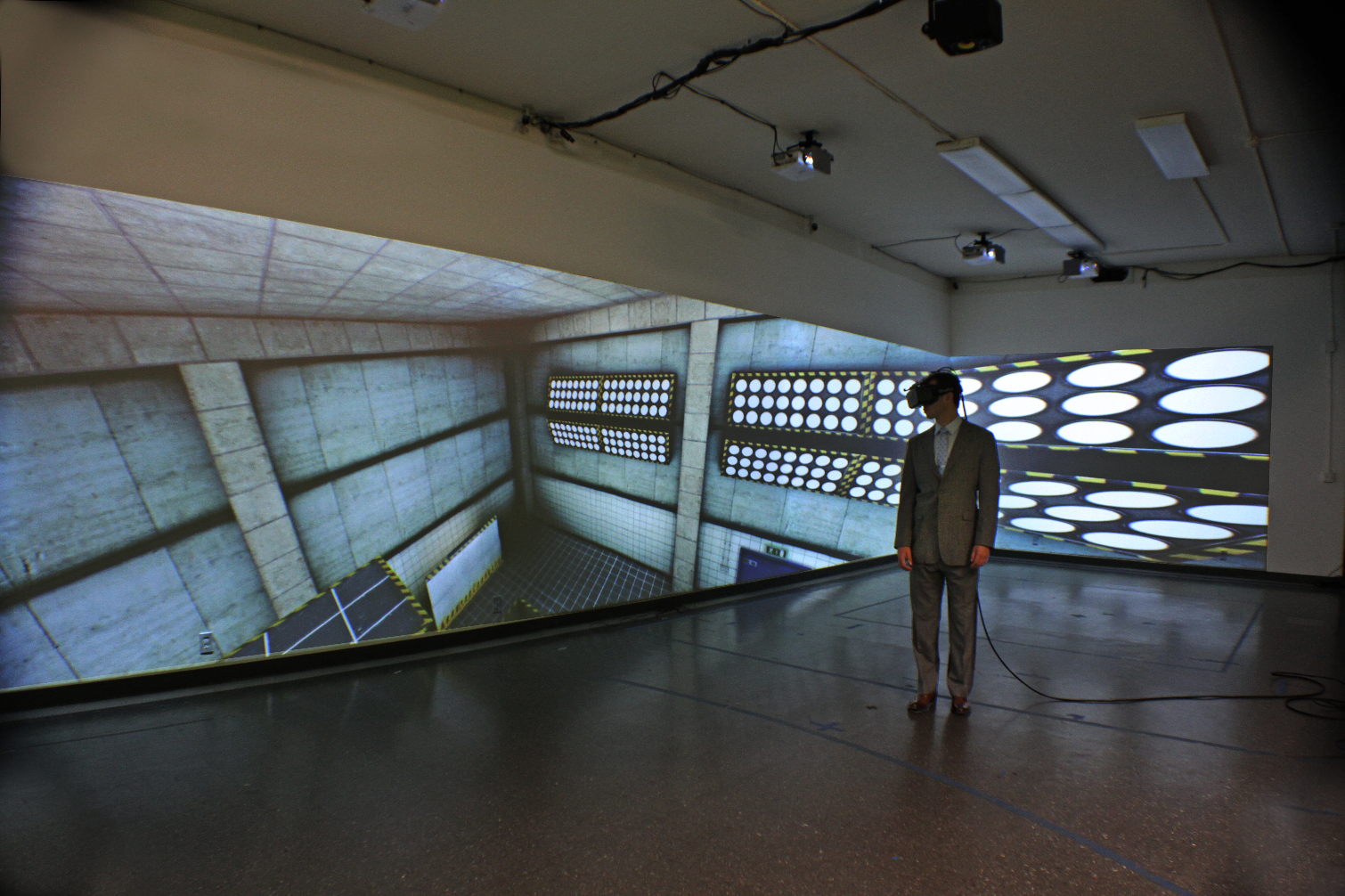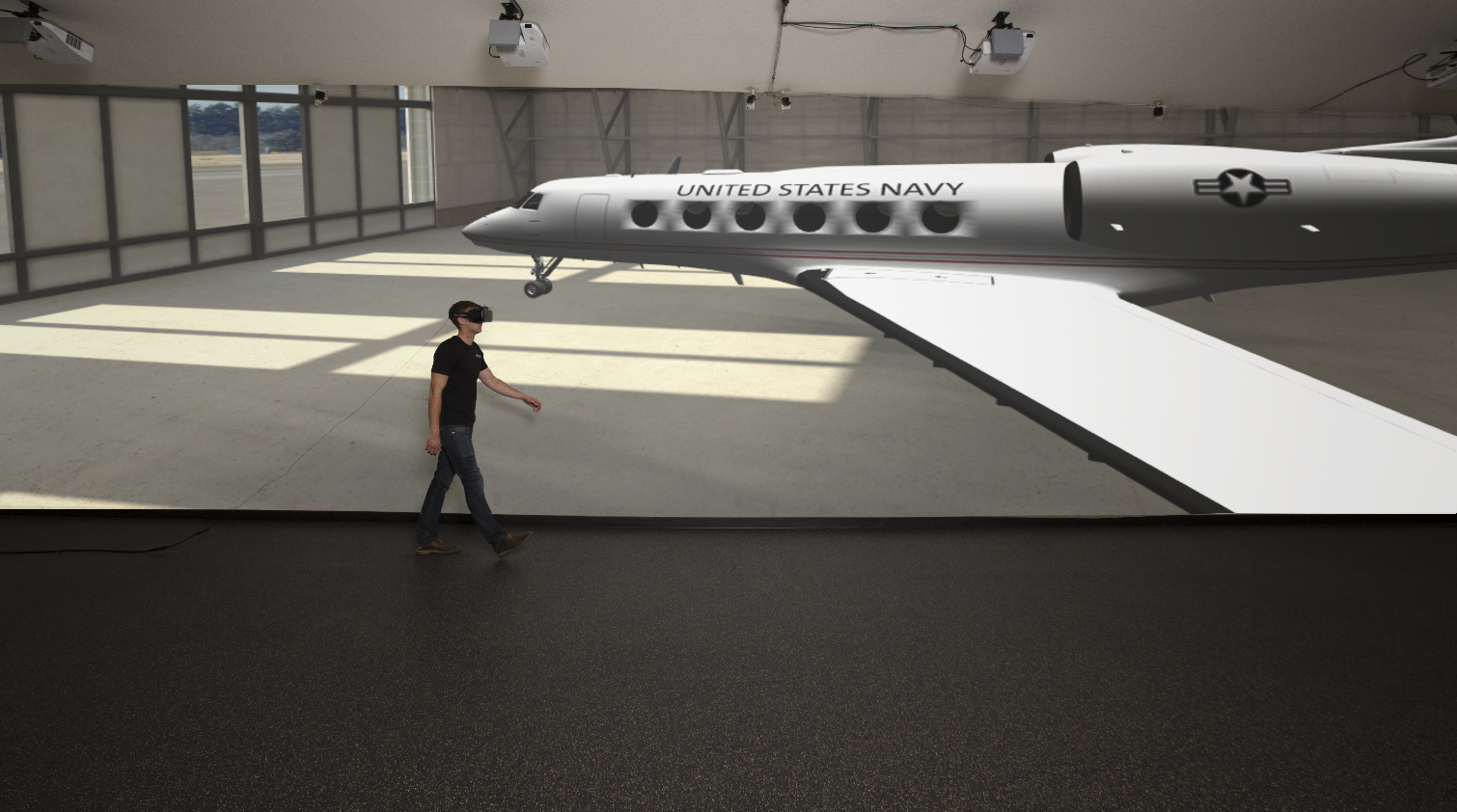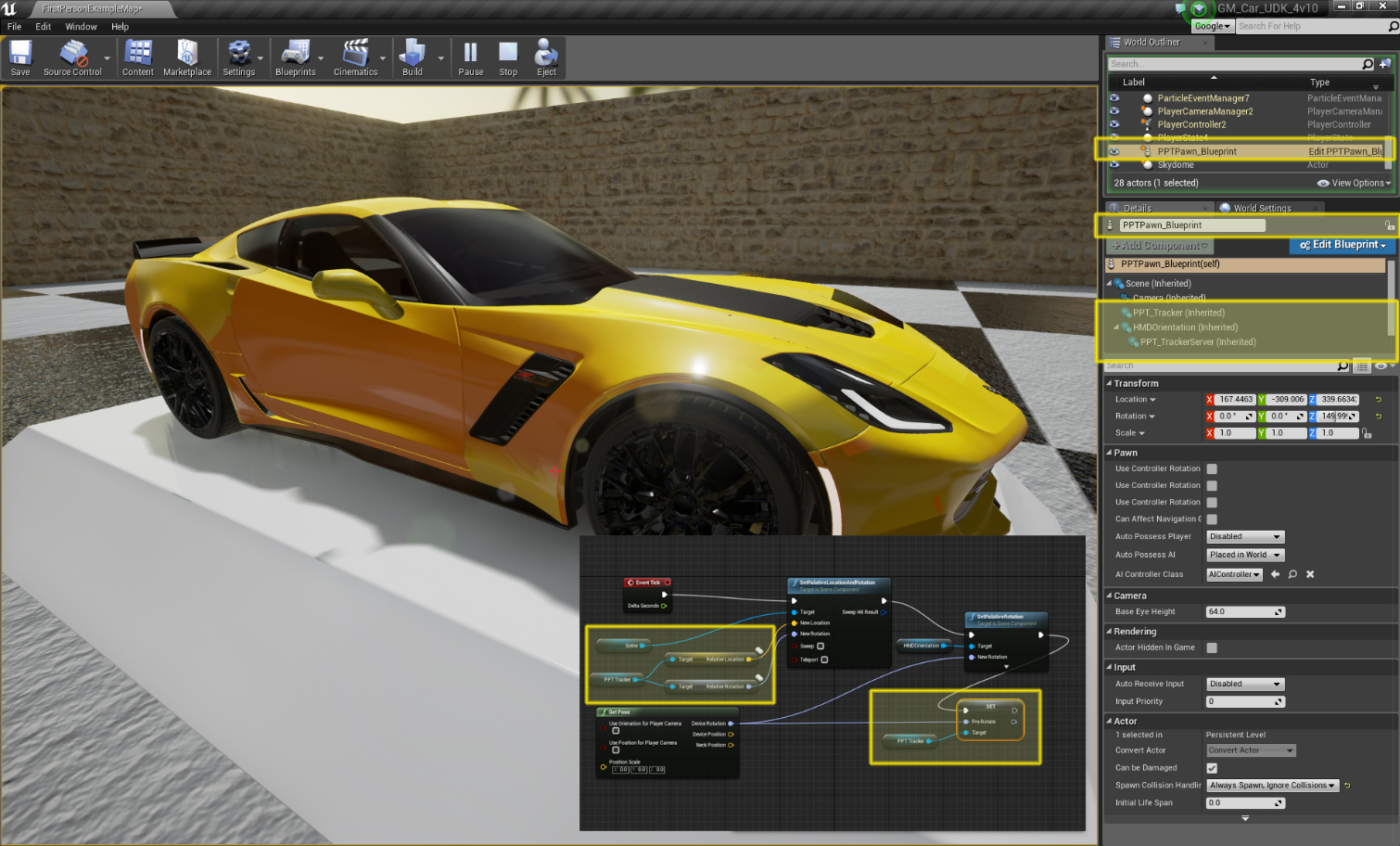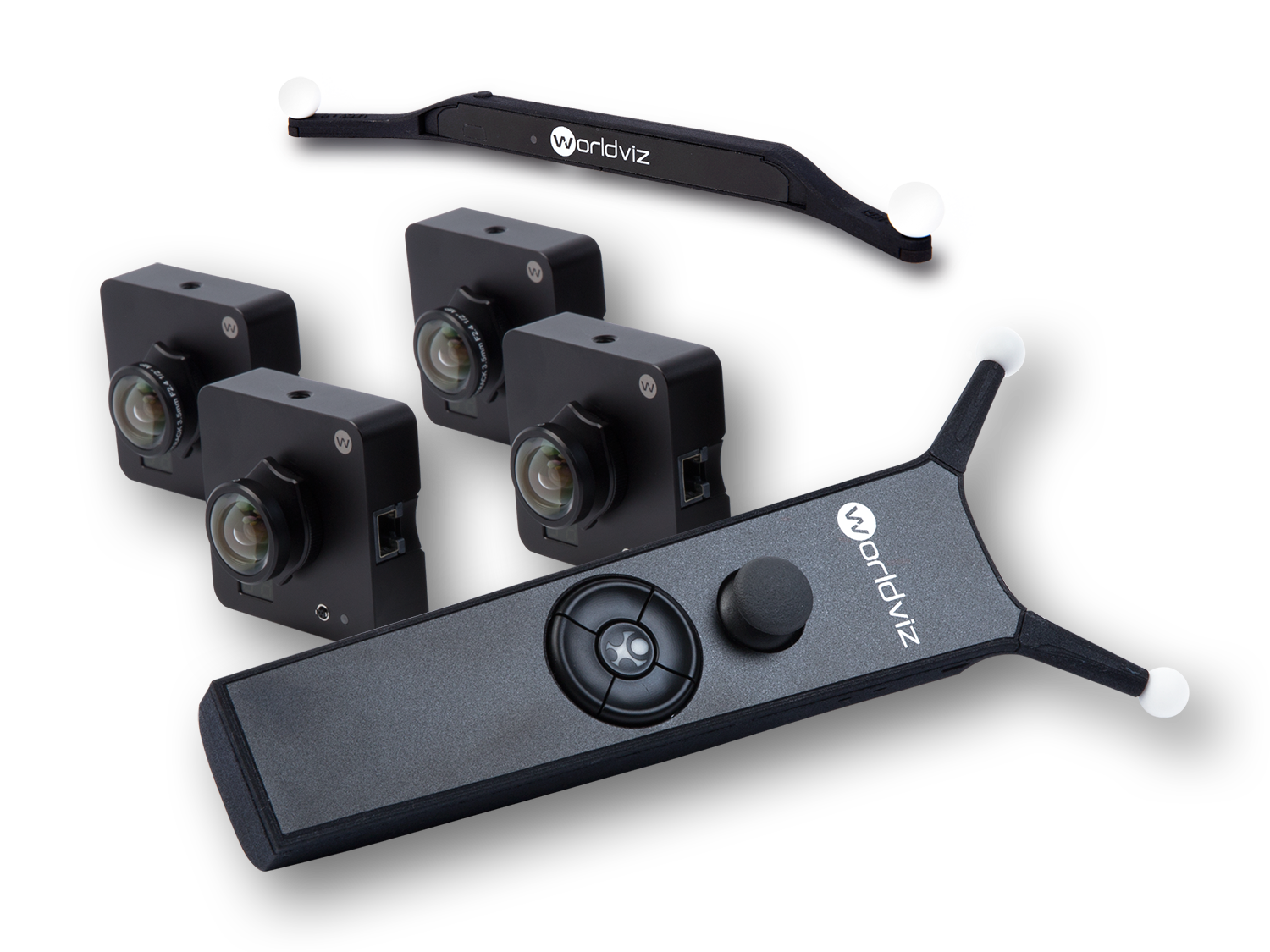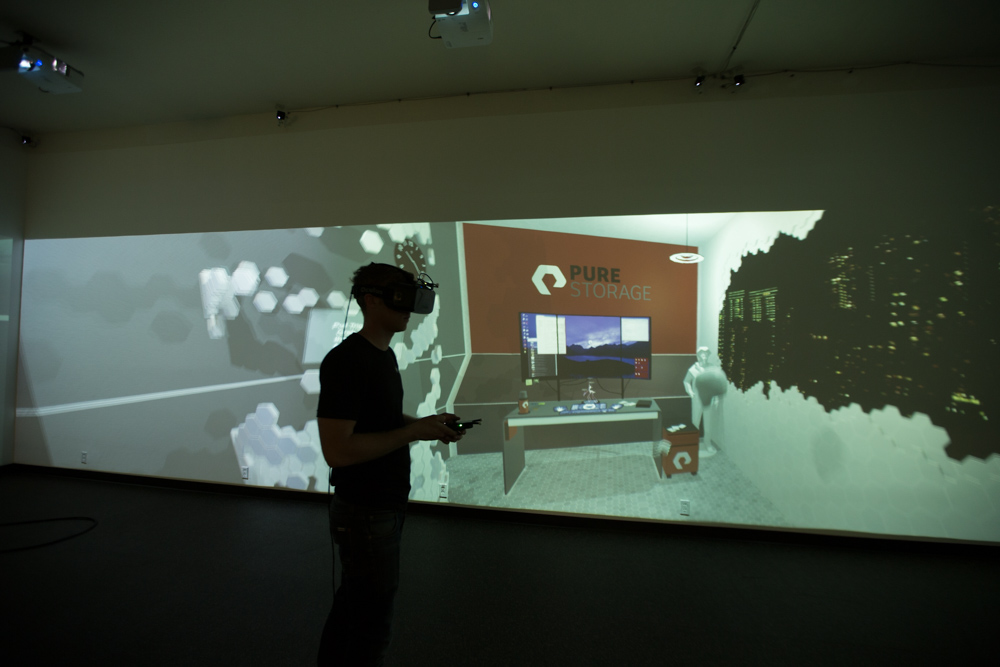Unity, Unreal Engine Plugins Coming To WorldViz 'Warehouse-Scale' Tracking System
WorldViz announced that it will be releasing plugins that add support for its Precision Position Tracking (PPT) system to the Unity and Unreal graphics engines. Integration with mainstream engines allows for consumer-grade VR HMDs to be used with WorldViz’s “warehouse-scale” positional tracking system.
WorldViz was bred from the academic research being done at the University of California and MIT in the early 2000s that studied human cognition and human perception. The founders of the company realized that VR technology was finding its way to a new medium and started commercializing the VR tech 2002. Peter Schlueer, WorldViz President, told us that the company started selling directly to academic research facilities, but customers now include Fortune 500 companies such as Boeing and Lockheed Martin.
WorldViz is able to build large-scale VR and 3D installations for visualizing huge projects at true one to one scale. For example, Boeing uses the PPT system in a large warehouse-scale setup that enables it to visualize its airplanes before building them.
The WorldViz PPT system is capable of tracking spaces as large as 50 x 50 meters, which is ten times the size of the HTC Vive’s maximum tracked area. It is also capable of tracking as many as 10 objects. Schlueer told us that practically any object can be tracked--it just needs to have a light marker installed.
The WorldViz PPT system does its position tracking using flickering LED lights. Each marker has two lights that flicker at specific intervals. Schlueer said that each marker functions at a different frequency, which lets the PPT system tell which object is which.
The WorldViz PPT system is versatile, capable of being setup as a “power wall.” This scenario uses short throw 3D projectors that project onto one wall, and you use active 3D shutter glasses with a PPT marker attached to them to track your movement. Schlueer said that a power wall installation can be set up with as few as two PPT cameras. Businesses can also choose to project onto multiple walls to create a “poor man’s VR” system. With projectors on three walls, WorldViz PPT can project 3D objects that you can walk around in the room. Room-scale setups require at least four cameras, and the system can scale as you add more cameras.
For a VR setup, WorldViz offers a number of different possibilities. You can have installations with multiple different brands of HMD used at once (we experienced a demo of this tech in action at GTC earlier this year). WorldViz can build large warehouse-scale systems that are powered with laptops in backpacks. Customers that require more graphics processing power than a traditional desktop or laptop can provide can opt to cluster multiple PCs together for even more rendering power. The tradeoff for a system like this would be limited range, although Schlueer told us WorldViz can extend HMD cabling up to 15 meters beyond their default range.
Get Tom's Hardware's best news and in-depth reviews, straight to your inbox.
The PPT system isn’t new. It has been available to companies using industrial VR HMDs and 3D glasses for some time using the company's proprietary Vizard development platform. However, the Unity and Unreal plugins that the company is releasing next month will make it easier to work with consumer grade hardware. Unity and Unreal Engine already have native support for the Oculus Rift and Gear VR, HTC Vive, and Playstation VR. Both platforms have also announced support for Google’s upcoming Daydream reference designs. WorldViz’s plugins make the PPT system compatible with all of these different devices.
WorldViz said that PPT system communicates wirelessly. The cameras scan for the lights emitted from the markers at 240 Hz, and the tracking data is sent back to the computer via Wi-Fi technology. Schlueer said that the position tracking data requires so little bandwidth that it doesn’t cause any additional latency. The company does offer the ability to have a system dedicated to processing the tracking data and a separate unit for rendering, but both workloads can be done with the same machine for less demanding applications.
The WorldViz Precision Position Tracking System is available now. Packages start at $15,000 and go up depending on how many cameras you wish to add. The Unity and Unreal plugins will be available before the end of June.
Follow Kevin Carbotte @pumcypuhoy. Follow us on Facebook, Google+, RSS, Twitter and YouTube.
Kevin Carbotte is a contributing writer for Tom's Hardware who primarily covers VR and AR hardware. He has been writing for us for more than four years.
